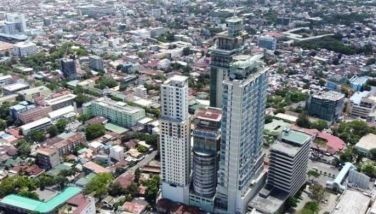‘Kaplag a Cebuano identity’
CEBU, Philippines — The discovery of the image of the Sto.Niño on April 28, 1565 did not only bring faith among Cebuanos but also bolstered Cebu’s cultural, historical, and religious identity.
This was the message of Fr. Pacifico Nohara Jr., rector of the Basilica Minore del Santo Niño, during yesterday’s opening Mass at the Magellan’s Cross in celebration of the Kaplag or the finding of the Sto. Niño de Cebu from a torched Cebuano settlement 453 years ago.
Kaplag is a Cebuano word for find.
“Finding the Sto. Niño brought us faith; baptism has given us new life and hope. These are the real reasons nganu’ng gihatagan gyud nato’g bili ang iyang pagkakaplag,” Nohara said.
He said Cebu is blessed to have the Sto. Niño, which has drawn people closer to the Lord.
Fr. Ric Anthony Reyes, the media liaison officer of the basilica, said the Señor Santo Niño had a starring role in the evangelization of the Filipinos, noting the image aptly symbolizes the Christianization of the Philippines.
“Importante ni siya (the finding of the highly-revered Christian relic) sa lives sa Cebuanos because this is our history, this is part of our culture and spirituality, and this is part of our identity isip usa ka syudad nga diri napahimutang ang Snr. Sto. Niño,” he said.
The image of the Sto. Niño was the same one that explorer Ferdinand Magellan gifted to Rajah Humabon and his wife Juana in 1521. The wooden image was rediscovered by Spanish soldier Juan Camus in the burned ruins of a pre-Spanish settlement in Cebu in 1565. Camus was a member of the Spanish expedition led by Miguel Lopez de Legazpi to colonize the archipelago and convert the natives to Christianity. — Mary Kristine M. Cameros- CNU Comm Intern (FREEMAN)
- Latest
























